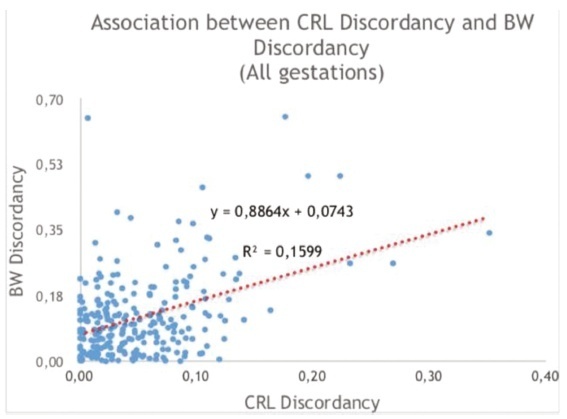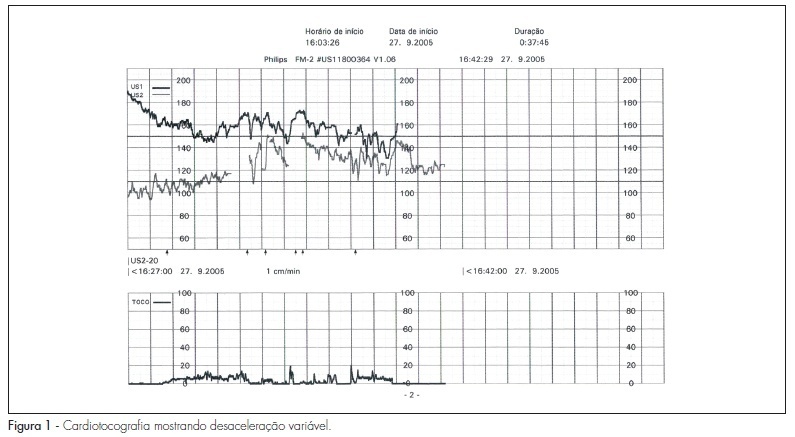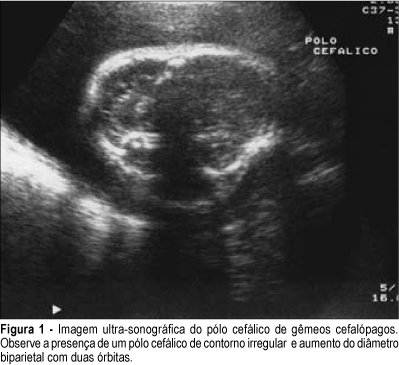Summary
Revista Brasileira de Ginecologia e Obstetrícia. 2020;42(9):529-534
The purpose of the present study was to analyze the influence of chorionicity in the biometric parameters crown-rump length (CRL), birthweight (BW), crown-rump length discordancy (CRLD) and birthweight discordancy (BWD), determine the correlation between these latter two in cases of intertwin discordancy, and to analyze the influence of chronicity in the presence of these discordancies with clinical relevance (> 10% and > 15%, respectively).
The present study was a retrospective study based on the twin pregnancy database of the Centro Hospitalar S. João (2010-2015), including 486 fetuses among 66 monochorionic (MC) and 177 dichorionic gestations (DC). The inclusion criteria were multiple pregnancies with 2 fetuses and healthy twin gestations. The exclusion criteria were trichorionic gestations and pregnancies with inconclusive chorionicity, multiple pregnancy with ≥ 3 fetuses and pathological twin gestations.
No statistically significant difference was found in BW (p = 0.09) and in its discordancy (p = 0.06) nor in CRL (p = 0.48) and its discordancy (p = 0.74) between MCs and DCs. Crown-rump length discordancy and birthweight discordancy were correlated by the regression line “BWD = 0.8864 x CRLD + 0.0743,” with r2 = 0.1599. Crown-rump length discordancy > 10% was found in 7.58% of monochorionic and in 13.56% of dichorionic twins. Birthweight discordancy > 15% was detected in 16.67% of monochorionic and in 31.64% of dichorionic twins.
No statistically significant influence of chorionicity was identified in both birthweight and birthweight discordancy, as in crown-rump length and crown-rump length discordancy. Birthweight discordancy was correlated to crown-rump length discordancy in 20% of cases.

Summary
Revista Brasileira de Ginecologia e Obstetrícia. 2015;37(5):216-221
DOI 10.1590/SO100-720320150005272
To compare obstetric outcomes of induced preterm twin births (under 32 weeks gestation) with those spontaneously conceived.
Prospective study of twin pregnancies (25 induced and 157 spontaneously conceived) developed over a period of 16 years in a tertiary obstetric center. Demographic factors, obstetric complications, gestational age at delivery, mode of delivery, birth weight and immediate newborn outcome were compared.
The analysis of obstetrical complications concerning urinary or other infections, hypertensive disorders of pregnancy, gestational diabetes, fetal malformations, intrauterine fetal death, intrauterine growth restriction and intrauterine discordant growth reveal no significant statistical differences between the two groups. First trimester bleeding was higher in the induced group (24 versus 8.3%, p=0.029). The cesarean delivery rate was 52.2% in spontaneous gestations and 64% in induced gestations. Gestational age at delivery, birth weight, Apgar scores at first and fifth minutes, admissions to Neonatal Intensive Care Unit and puerperal complications show no statistically significant differences between the two groups. These results were independent of chorionicity and induction method.
The mode of conception did not influence obstetric and neonatal outcomes. Although induced pregnancies have higher risk of first trimester bleeding, significant differences were not observed regarding other obstetric and puerperal complications and neonatal results.
Summary
Revista Brasileira de Ginecologia e Obstetrícia. 2011;33(5):211-218
DOI 10.1590/S0100-72032011000500002
PURPOSE: the aim of this study was to analyze conjoined twins in terms of antenatal, delivery and postnatal aspects. METHODS: a retrospective descriptive analysis of prenatally diagnosed conjoined twins. Prenatal ultrasound and echocardiography, delivery details, postnatal follow-up, surgical separation and post mortem data were reviewed. The twins were classified according to the type of fusion between fetal structures. The following data were analyzed: ultrasound and echocardiographic findings, antenatal lethality and possibility of surgical separation, delivery details and survival rates. RESULTS: forty cases of conjoined twins were included in the study. There were 72.5% cases of thoracophagus, 12.5% of paraphagus, 7.5% of omphalo-ischiophagus, 5.0% of omphalophagus, and 2.5% of cephalophagus. Judicial termination of pregnancy was requested in 58.8% of the cases. Cesarean section was performed in all cases in which pregnancy was not terminated. The mean gestational age at delivery was 35 weeks; all twins were live births with a mean birth weight of 3,860 g and 88% died postnatally. Ten percent of the live borns were submitted to surgical separation with a 60% survival rate. The total survival rate was 7.5% and postnatal survival was 12%. Antenatal evaluation of lethality and possibility of surgical separation were precise. There were no maternal complications related to delivery. CONCLUSION: conjoined twins present a dismal prognosis mainly related to the complex cardiac fusion present in the majority of cases with thoracic sharing. At referring centers, prenatal ultrasound and echocardiographic evaluation accurately delineate fetal prognosis and the possibility of postnatal surgical separation.
Summary
Revista Brasileira de Ginecologia e Obstetrícia. 2010;32(2):94-98
DOI 10.1590/S0100-72032010000200008
Monoamniotic twin pregnancies are very rare, but they are associated with high fetal morbidity and mortality. There is much controversy regarding the follow-up and obstetric procedures towards prenatal diagnosis of intertwined umbilical cords. In this article, we describe a case of monoamniotic pregnancy with diagnosis of intertwined umbilical cords, and we discuss aspects related to the follow-up and obstetric procedures through a brief literature review.

Summary
Revista Brasileira de Ginecologia e Obstetrícia. 2006;28(7):416-423
DOI 10.1590/S0100-72032006000700007
Conjoined twins have a rare prevalence and special curiosity among physicians and the general population. The reported frequency varies from 1:50,000 to 1:200,000 pregnancies. Its early diagnosis becomes very important when we think about pregnancy management, method of delivery and neonatal care. We describe two cases of conjoined twins diagnosed by ultrasound and magnetic resonance during prenatal care with the aim to better studying the fetus anatomy. The first conjoined twins were cephalopagus sharing head, thorax and abdominal wall and with two pelvis and four arms and four legs. The second were thoracopagus, united by thorax and part of abdomen. Magnetic resonance imaging contribution was not important to diagnose conjoined twins. However, it was useful to describe the shared organs, contributing to define fetal outcome.

Summary
Revista Brasileira de Ginecologia e Obstetrícia. 2001;23(7):423-427
DOI 10.1590/S0100-72032001000700003
Purpose: to evaluate the impact of birth time interval between twins in relation to the morbidity and mortality of the second newborn twin. Methods: this is a retrospective study of 50 women with twin pregnancy at the `Maternidade Pró-Matre de Vitória' who gave birth to 100 alive newborns through the vaginal canal, weighing each over 500 g and not having any major malformations. The newborns were separated into two groups: G1 (first twin) and G2 (second twin). The following criteria were considered to be indicative of newborn morbidity: asphyxia at birth, characterized by Apgar index lower than 7 in the first minute of life; respiratory distress syndrome detected by clinical and radiological findings, and hospitalization period longer than 4 days. In-hospital mortality was analyzed as well. Cut off was at every 5 minutes, up to 35 minutes, to study the time interval between the twin (deltat) delivery. A time-span (deltat) analysis was also carried out up to 5 minutes: 6-10, 11-15, 16-20, and 21-150 minutes. Results: there were no statistically significant differences between the second twin's morbidity/mortality in relation to the first, considering the aforesaid cutoff and time-span levels. Conclusion: delivery time interval between G1 and G2 did not influence the second twin's morbidity and mortality; however, in the assistance of the second twin's delivery, it is absolutely necessary to individualize the characteristics of each case, not allowing any anxiety to set in through untimely and potentially damaging procedures.
Summary
Revista Brasileira de Ginecologia e Obstetrícia. 2002;24(6):389-394
DOI 10.1590/S0100-72032002000600006
Purpose: to study the influence of weight differences between twins on the perinatal results. Methods: the twin deliveries at the Maternity of the Hospital Regional de Clínicas de Sorocaba, SP, were retrospectively analyzed from July 1997 to June 1998. The samples were 89 mothers and their twins, divided into three classes of newborn weight differences, as follows: concordant (<15%), mild discordance (15 to 25%) and severe discordance (>25%). The independent variables analyzed were these three classes and the dependent variables were low weight at birth, Apgar index less than 7 at the first and fifth minute, premature delivery, time of permanence of the newborn in the nursery, and perinatal mortality coefficient I. Statistical analysis was performed using Kruskal-Wallis test, completed by Hollander test, and the Blackwell test. Results: the number of pregnancies (62, 17 and 10) and premature deliveries (32, 9 and 7) were observed respectively in the three classes. For the first and second twins we observed: low weight at birth (39/41, 13/12 and 8/9), Apgar index less than 7 at the first minute (16/13, 3/7 and 2/3), Apgar index at the fifth minute (4/4, 0/2 and 1/2), time (in days) of permanence of the newborn in the nursery (3.7/3.7, 4.6/6.0 and 7.3/8.7) and perinatal mortality coefficient I (22.4/16.8, 0/16.8 and 5.6/5.6). Conclusions: the incidence of weight discordance between twins was 30.3%, 19.1% being mild discordance and 11.2% severe discordance. There was a tendency to a progressive aggravation of perinatal results considering the degree of discordance of the classes (concordant < mild discordance < severe discordance).